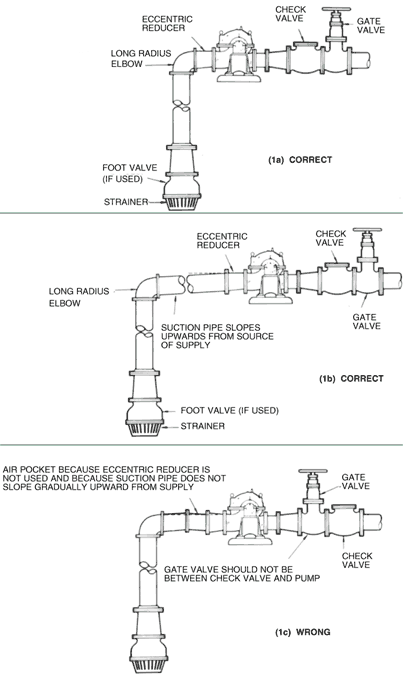The design of a piping system can have an important effect on the successful operation of a centrifugal pump. Such items as sump design, suction piping design, suction and discharge pipe size, and pipe supports must all be carefully considered.
Selection of the discharge pipe size is primarily a matter of economics. The cost of the various pipe sizes must be compared to the pump size and power cost required to overcome the resulting friction head.
The suction piping size and design is far more important. Many centrifugal pump troubles are caused by poor suction conditions. The function of suction piping is to supply an evenly distributed flow of liquid to the pump suction, with sufficient pressure to the pump to avoid excessive cavitation in the pump impeller.
The Suction pipe should never be smaller than the suction connection of the pump, and in most cases should be at least one size larger. Suction pipes should be as short and as straight as possible. Suction pipe velocities should be in the 5 to 8 feet per second range unless suction conditions are unusually good.
Higher velocities will increase the friction loss and can result in troublesome air or vapor separation. This is further complicated when elbows or tees are located adjacent to the pump suction nozzle, in that uneven flow patterns or vapor separation keeps the liquid from evenly filling the impeller. This upsets hydraulic balance leading to vibration, possible cavitation, and excessive shaft deflection. Especially on high and very high suction energy pumps. Shaft breakage or premature bearing failure may result.
On pump installations involving suction lift, air pockets in the suction line can be a source of trouble. The Suction pipe should be exactly horizontal, or with a uniform slope upward from the sump to the pump as shown in Fig. 1. There should be no high spots where air can collect and cause the pump to lose its prime. Eccentric rather than concentric reducers should always be used, on horizontal installations, with the flat side located on top.





